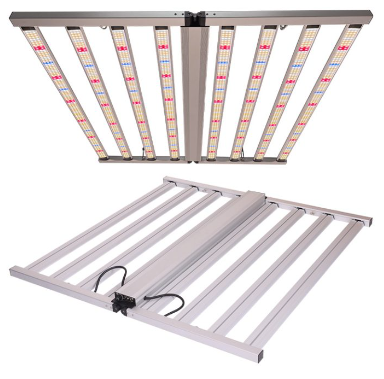Succulents are beloved for their beauty and adaptability, but they require specific care to thrive. This comprehensive guide will explore essential tips for nurturing your succulents, focusing on the critical role of LED grow lights in their care.
Understanding Succulents: Nature’s Water Reservoirs

Key Strategies for Successful Succulent Care
1. Optimize Pot Selection
Choosing the right container is essential for succulent health. Use pots with drainage holes to prevent water accumulation, which can lead to root rot. Ceramic pots are a great option, as they provide both breathability and moisture control.
2. Select Appropriate Soil Mix
Standard potting soil can hold too much moisture, harming your succulents. Instead, use a specialized soil mix that combines potting soil, sand, and perlite. This will ensure proper drainage and promote healthy root development.
3. Keep Succulents Warm During Winter
Succulents thrive in warmth, so avoid exposing them to temperatures below 4°C (39°F). Maintain indoor temperatures around 10°C (50°F) during winter to prevent frost damage, moving them indoors before temperatures drop significantly.
4. Water with Care
Watering succulents correctly is vital. During summer, water them weekly; in spring and autumn, every two weeks; and during winter dormancy, once a month. Ensure the soil dries out between waterings to avoid root problems.
5. Ensure Adequate Light
Bright, direct sunlight is essential for succulent growth. They typically need at least 6 hours of light each day. If natural light is insufficient, consider using succulent grow lights to supplement their needs.
The Role of LED Grow Lights
 Optimal Height for Grow Lights
Optimal Height for Grow Lights
When setting up your LED grow lights, position them 6 to 8 inches above the plants initially. Gradually lower them as the succulents acclimate to receive more intense light without risk of burning.
Duration of Light Exposure
The photoperiod is crucial for indoor succulents. In winter, a 20/4 light cycle (20 hours on, 4 hours off) is recommended. Adjust to a 16/8 cycle as the seasons change to allow the plants to enter dormancy. For year-round growth, keep them on a 24/0 or 20/4 cycle during summer.
Recognizing Light Imbalance
Monitoring your succulents for signs of light stress is important:
- Excess Light: Yellowing or browning leaves, particularly at the edges, and compact rosettes indicate too much light.
- Insufficient Light: Stretched stems and curling leaves suggest inadequate lighting, especially during winter months.
Enhancing Pest Control with Grow Lights
Utilizing succulent grow lights not only supports healthy plant growth but also helps deter pests and diseases. Proper lighting boosts the plants’ immunity, reducing the risk of issues like gray mold. Increased visibility allows for early detection of pests, making management easier.
 Conclusion: Your Succulent Success Awaits
Conclusion: Your Succulent Success Awaits
Caring for succulents can be a fulfilling endeavor with the right techniques and tools. By implementing these strategies and integrating high-quality LED grow lights into your care routine, your succulents will thrive year-round. For more information on our products and tips for successful succulent care, visit our website. Happy gardening!































